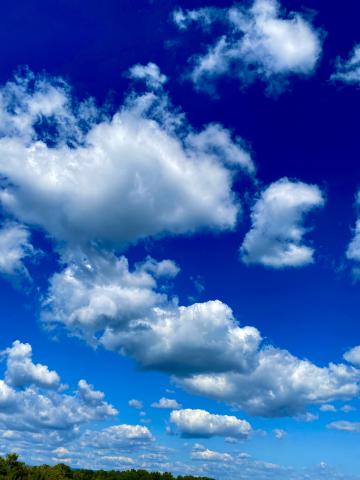Blue Skies
By Steve Roark
Volunteer, Cumberland Gap National Historical Park
A blue sky has a positive impact on our psyche, not only being something beautiful to behold but also foretells a day of nice weather. The blue is even more enhanced if there are bright white clouds present. This leads to the question perhaps you hadn’t thought of: why is the sky blue? Prepare yourself for a short physics lesson.
The sun emits light, which is a form of energy that exists as bands of electromagnetic waves. The length of these waves is what gives us the colors we see. The color violet has the shortest visible wavelength, while red has the longest. All other colors fall somewhere in between. Light travels from the sun to the earth in tiny energy particles called photons. The trip takes a little under nine minutes.
When these photons arrive at Earth and hit the atmosphere, most get absorbed. But nitrogen gas, which makes up 78 percent of the atmosphere, reflects the blue wavelength and scatters it, a process called Rayleigh scattering. And so the blue light comes racing down to earth and enters our eyes, which send the information to your brain. Your brain interprets the wavelength and tells you: “That's blue… pretty!”
Rainbows are proof that all the other colors are up there. The raindrops reflect more of the different wavelengths, which bounce down to our eyes so we can see violet, indigo, blue, green, yellow, orange and red bands of color arching across the sky.
What’s cool about the sky is that it’s never the same color blue every day. When it's heavy laden with humidity, it’s pale and subdued. Other times after a storm front has cleared out the air, the sky is a deep blue it defies description. Morning skies are different from evening skies. Whatever shade it is, pause in your busy day and take a look.
- Log in to post comments
